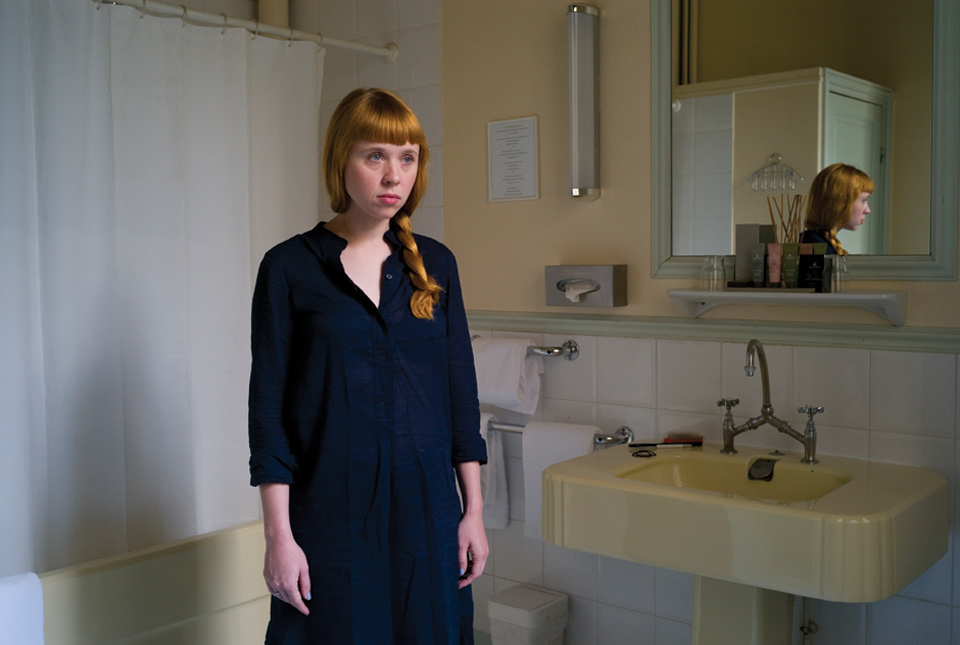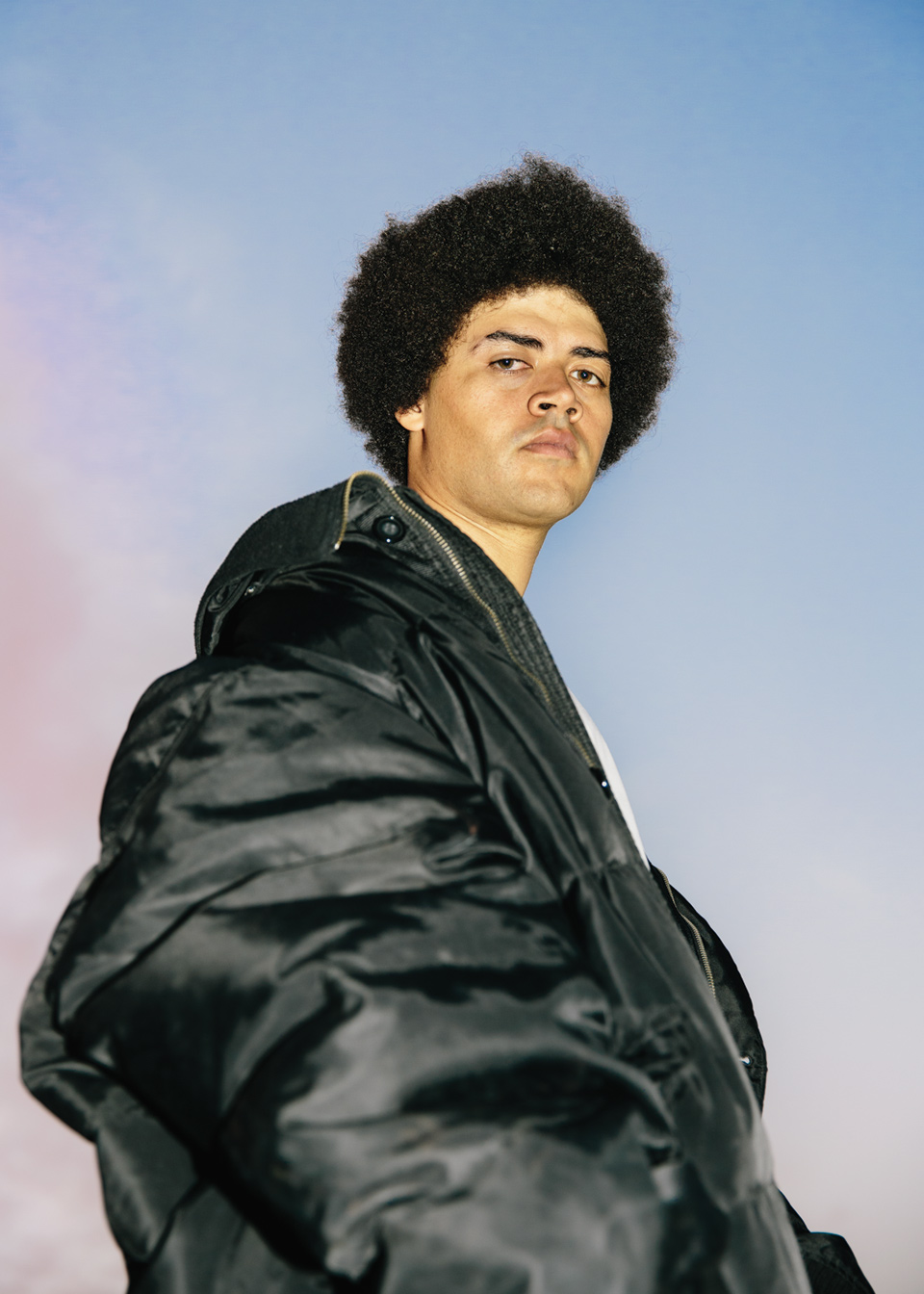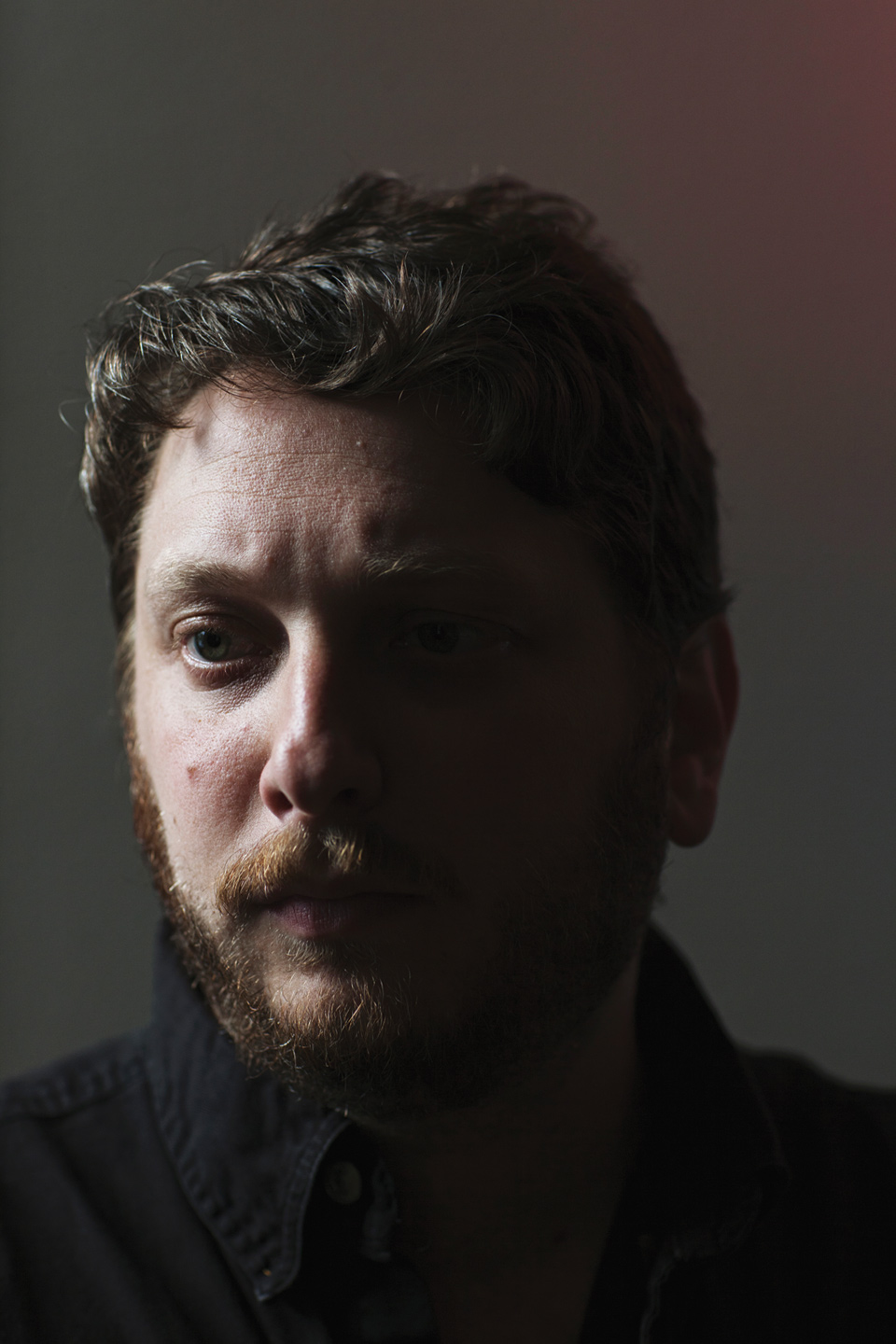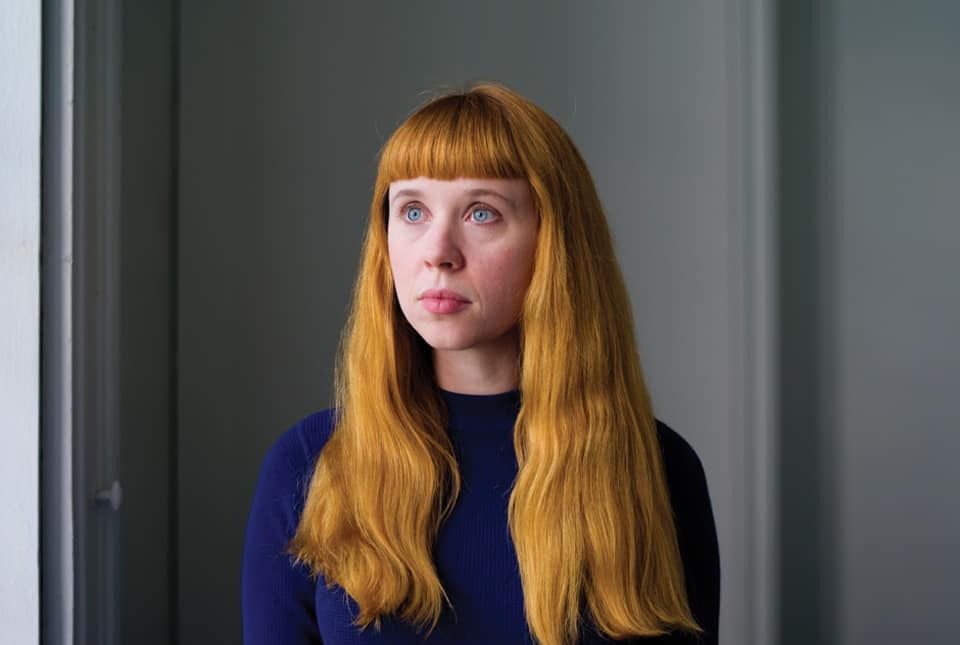Like Trent Reznor before them, three young artists are drafting music's future
From the magazine: ISSUE 88, October/November 2013
Not every artist needs to be future-focused. Sometimes a guitar, bass and drums will work just fine. But Trent Reznor always hungered after something more, both musically and in performance; he rigged synthesizers, screamed, flailed and generally made some catchy, rowdy noise. His music made use of the technology of his time while also straining against its creative limitations. Flash forward to the contemporary, electronic underground, and Holly Herndon, James Ferraro and Oneohtrix Point Never are like Reznor was almost 30 years ago, when Nine Inch Nails began. All have a strong sense of self and some unusual ideas about sound that we think will some day become the norm. Until then, as Reznor continues to be, they’re visionaries.
Holly Herndon
After a childhood in not-so-cutting-edge Tennessee, Holly Herndon moved first to Berlin, and then to California’s tech-forward Bay Area, where she got an MFA in electronic music at Mills College and is now pursuing a doctoral degree in composition at Stanford University. Between classes at the school’s prestigious Center for Computer Research in Music and Acoustics, where she’s learning about the future of music technology from some of its most influential engineers, Herndon is making deeply ruminative and immediately sensual electronic music that’s driven by the human voice. Her song “Breathe,” for example, builds a dizzying, titanic chorus out of only a gasp. Crafted using Ableton and the visual programming language Max/MSP, Herndon’s music is entrancing and transgressive, whether you consider it part of popular music or academia. “I’m in this weird middle ground that makes people uncomfortable,” she says over the phone from her home in San Francisco. “It’s the more interesting place to be.” Herndon took a break from plotting her follow-up to last year’s Movement LP to talk about the shrinking rift between musicians and the people who build their tools.
duncan cooper

Holly Herndon: Artists and engineers used to be like Men Are from Mars, Women Are from Venus. Now I think they’re coming closer together. For example, I’m working on a plugin now with a friend of mine, Barry Threw. We’re going to try to release it for free with my next single. I have been using it all over the place for vocal processing, but it’s kind of skeletal, so he’s working to help clean it up and get it ready for the public. I’ve got another friend, an independent developer, who makes music apps and little synthesizers and sells them in the iTunes store. He shares these tools with people for like, three dollars, and then somebody will make a piece of art with it.
I was at a festival in Stockholm a couple months ago called Vision of the Now, and we had various local hackers working on different problems that artists at the festival came up with. One of the questions [I came up with] was how to harness my day-to-day emotional interactions on the computer into data that I could use for musical performance. The computer is such a huge part of your daily mediation—talking on the phone, Skyping with your parents, emailing—that what goes through your computer is hyper-personal, hyper-personalized to you and your life. They hacked together this really rudimentary framework that registered keystrokes, so that anytime I made like a smiley face or a frowny face at the end of a sentence, it would plot the emotions out on a graph. I like acknowledging that my instrument is also this thing that I mediate my entire life through. For me, the computer is basically at the center of everything.
I was trying to find a way to make the laptop more expressive as a performance tool when I had this idea of giving the laptop itself a voice. Everybody can understand what it’s like to vocalize; almost everyone knows what it’s like to make sounds with their mouths. If you can create that kind of audience empathy, it’s really powerful. In performances now, I hold two microphones and do this swooping motion to pick up the hard drive activity in my laptop. Then I map these vocal synthesizers onto it, and it’s like the laptop is singing. That’s something that someone can understand who’s not interested in abstract music, even though the kernel of the idea is still conceptually very sound. And I think that’s when art is really powerful: when you can actually translate beyond a micro-community. Maybe only you or a few people want to nerd out about the ideas behind it, but how can you make that relevant to society as a whole? Say my mom emails me and is like, “Your dad had a heart attack,” or something extreme. How do I express emotions that come through a computer?
For photo access, thank you to the Hotel Langlois in Paris.

James Ferraro
When Far Side Virtual appeared in 2011, James Ferraro seemed to be pulling a fast one. Ditching the noisy, lo-fi aesthetic of his previous work, he produced what was essentially a collection of digital ringtones, its twinkling piano runs and upbeat melodies teetering devilishly on the brink of full-blown Muzak. “Everyone thought that I was kind of losing my mind making something really happy and weird,” says Ferraro of the album. More than simply going against the grain of the warped cassette sensibility that had captured the period’s ear, Far Side Virtual seemed to point the underground’s gaze to the technology of the present, opening the door to a new wave of artists like Gatekeeper, Dean Blunt and Fatima al Qadiri, all interested in harnessing the products of corporate engineering toward their own, idiosyncratic ends. Far Side Virtual, Ferraro explains, used of-the-moment tools to create something “totally devoid of human spirit,” like a digi-utopia and dystopia at the same time. Despite its bleak title, his latest album, NYC, Hell, 3:00 AM speaks to a more copacetic co-existence of man and machine.
emilie friedlander
“This is life right now, there’s nothing else outside of this, and accepting it is really important. I don’t think Leonardo da Vinci was sitting there not eating a certain type of pasta—I think he was a part of his world.”—James Ferraro
James Ferraro: Honestly, I didn’t really have access to a computer before Far Side Virtual—a lot of stuff I recorded was on tape. I was just doing things in that way cause that’s really all I had. The transition from lo-fi to high resolution—it’s kind of complicated. In a lot of ways, it was just being a bit more committed to my work and wanting more people to understand it. If it’s lo-fi, they actually can’t hear it. A lot of people didn’t have the ear to hear the complexities of it because it was so buried in tape or whatever. So I just started recording digitally more, and Far Side Virtual was sort of my digital renaissance. It was really strange—I just kind of plugged in and I was like, Whoa. The world really opened up in this strange way. I just think it’s important to work with the technology of the time.
Far Side Virtual was really crazy—I lost friends because of that record. When you’re making something that’s kind of next-level in its own way, you face a lot of cultural stigmas and prejudices. On a personal level, it’s really difficult to go through the process of making something like that, cause no one understands you—they won’t get it until the end. Now, in some circles, it’s cool to make music that sounds corporate, like answering machines. There’s a discourse surrounding it now, so you can do your record within that discourse. At the beginning, there was no discourse—you had to create it
I can see music continually co-opting itself with corporations and I can see music becoming, even more so, a means to sell a product—just the language and the lyrics reflecting only corporate capitalism. Humans always reflect their environment through their art, and I can see music just becoming completely that, completely advertisement. Even on the scale of avant-garde and underground artists. But it’s weird, because even the rejection of consumerism would be a type of ad placement, because the theory of rejecting would still lead people back to the product. I wouldn’t see it as sad, I would see it as life just doing what it does, carrying on, like human nature.
NYC, Hell, 3:00 AM is definitely a new beginning for me, even though it ties into concepts I’ve been working with for a while. In the past few years, I’ve started using Auto-Tune. There are still people who are very anti-Auto-Tune, but I think aesthetically it just kind of meshes with the environment we live in. When you reject something like that as an artist, you’re telling the world you’re not really ready for the future. This is life right now, there’s nothing else outside of this, and accepting it is really important. I don’t think Leonardo da Vinci was sitting there not eating a certain type of pasta—I think he was a part of his world. And I recorded this album in a studio; it wasn’t a big studio or anything, but the process was different. I would like to work like that in the future, incorporating a hybrid of live, studio instrumentation and digital technology. I like how it feels blending the two, the more natural mixed with technology. I think technology just enhances what humans are capable of.

“Art in a technocracy is extremely competitive. It’s an arms race. If I don’t take part, then I run the risk of being out of fashion.”—Oneohtrix Point Never
Oneohtrix Point Never
“I like to collect sounds and ideas and let them pile up, then start subtracting,” says Daniel Lopatin, aka Brooklyn producer Oneohtrix Point Never. He’s describing his writing process, but the observation could also apply to his relationship with physical gear. After starting out with a single polyphonic analogue synth, he got heavily into samplers for a time, leading to the “collage-like elements” that characterized his acclaimed 2012 record, Replica. But for his October Warp Records debut, R Plus Seven, he downsized on hardware, holing up in his bedroom studio to customize kits and synths within Ableton. While his setup was pretty minimal, sonically it’s his most elaborate work to date. Lopatin describes the move toward designing his own software instruments as a response to getting “super fixated” on specific sounds—“I want it, as if it’s a material object that I can possess.” With the new album, he’s getting closer to being able to reproduce and manipulate any sound he could possibly dream up. A playful listen, R Plus Seven almost feels like a series of impressionistic paintings of the global dancefloor— there are techno mutations, rave echoes, modern classical flourishes—although he says it’s his “attempt to be candid about how I hear the world.” Technology, for Lopatin, is a tool designed to be refined—bent to satisfy his will, not the other way around.
ruth saxelby
Daniel Lopatin: I made the record in the space between my kitchen and my bed in my studio apartment. It was really nice to get back to a personal space that made me slow down a little bit. I stripped all the way back but I was also getting into plugins and VSTs and emulated versions of things. I was like, Oh man, I could create this total fantasy world that’s all contained in this vacuum of my home setup. I got way more nerd about it than I had in the past. I was more indulgent and maximalist. I wanted to paint this really complex tableaux with lots of characters and strange objects.
The tools I’m using are standard, with some modicum of customization, so the most specialized element in the equation is myself. My friend likened it to science fiction authors who use a typewriter to attempt to characterize something ineffable or impossible. I think this is very important, because I’m not a tech fetishist. The most interesting tools for me are the appropriative ones that allow me to freeze or enhance the sonic world around me so that I can explore the abstract materiality of those things.I’m working on the live set with my collaborator Paul Corley. He grew up in Dallas going to big EDM parties. He was a trance DJ and drummer but he also makes this beautiful electro-acoustic music. A lot of the time, I’m sitting there and thinking about things in a material way. I’ll be like, I want a rubber synth. And he’ll be like, What do you mean you want a rubber synth? I want an instrument that can give me an incredible, malleable control over a tone. It’s extremely elastic and it sounds like black rubber that I can stretch and cover things with and wrap things around and it has this particular kind of rubber smell to it. We’re working it out so I can have granular control over these kinds of material aspects of the music, manipulate it in a sculptural way. I feel like if there was an easy way to get all of that, I’d use it and I’d lose it. I’d be bummed out, because it wasn’t a struggle.
Art in a technocracy is extremely competitive. It’s an arms race. If I don’t take part, then I run the risk of being out of fashion. But then I think, what’s better than the opening credits of a Woody Allen film? It never changes. Fundamentally, I’m still interested in cosmic and epic things. So as long as I have that need to describe something that’s epic in nature, it’s probably going to lend itself to delivering my musical ideas in a way that’s intoxicating—physically intoxicating, in that way when you go and see a film and the sound design envelops you and shapes your core. That’s a very powerful and very contemporary thing that is always a concern. But is that me as a composer? It’s part of it but, if I’m honest with myself, it’s never where I start. At the end of the day, those can be very manipulative forces if you rely on them more than yourself and your own imagination.
